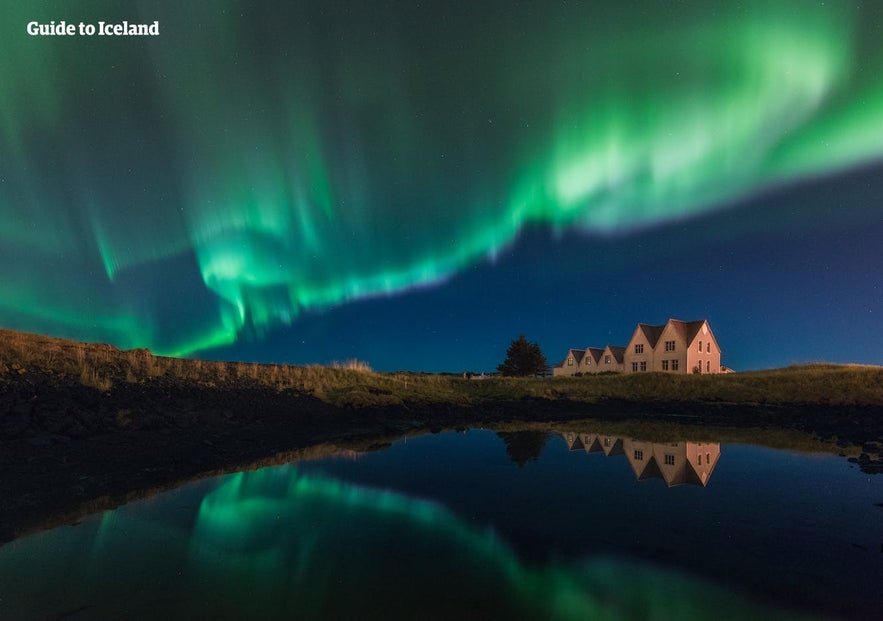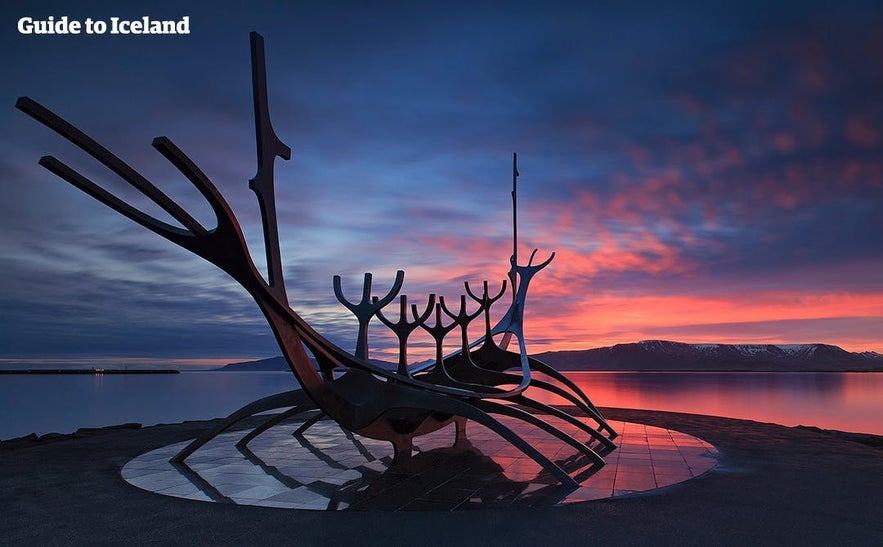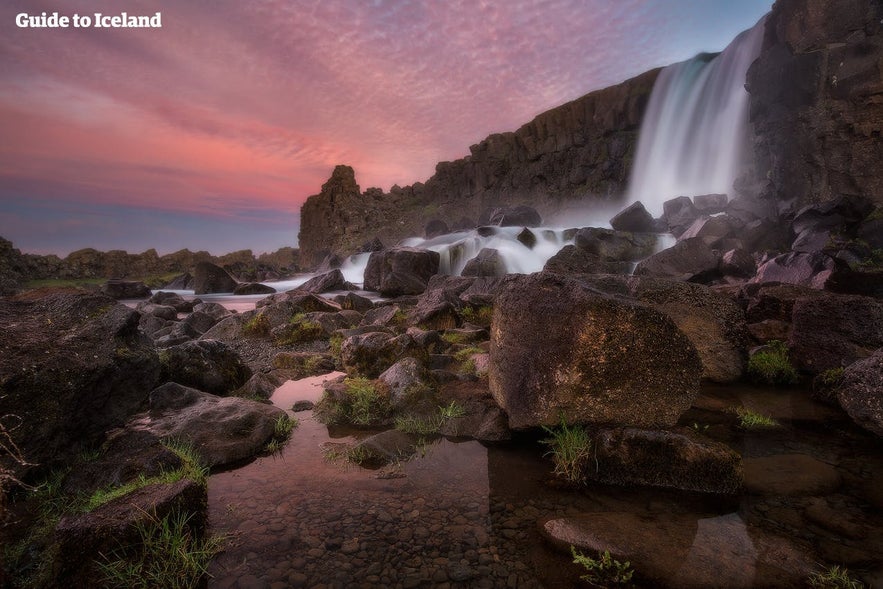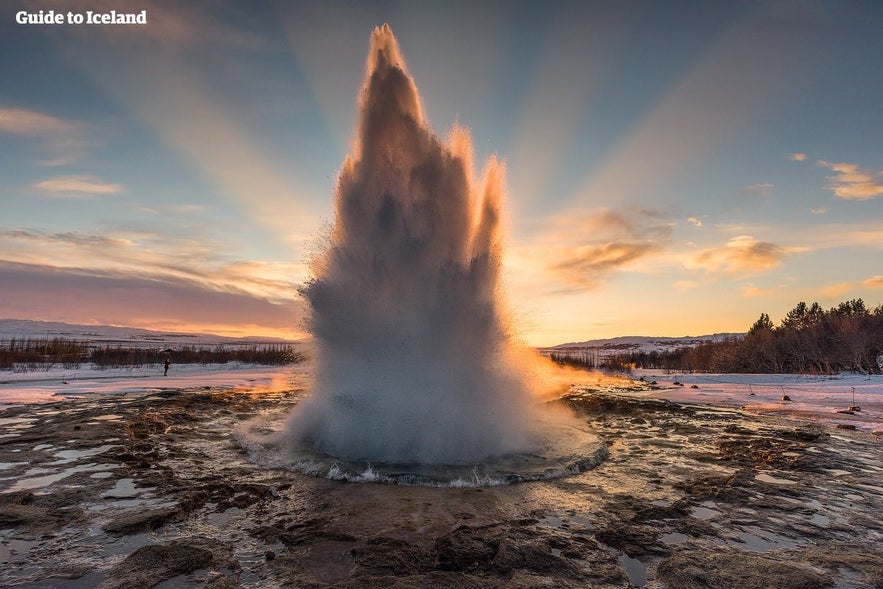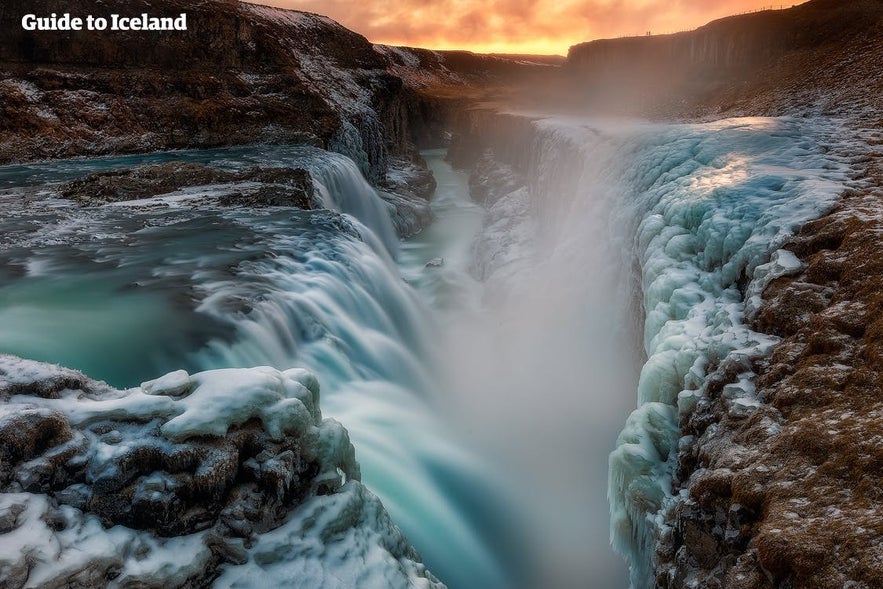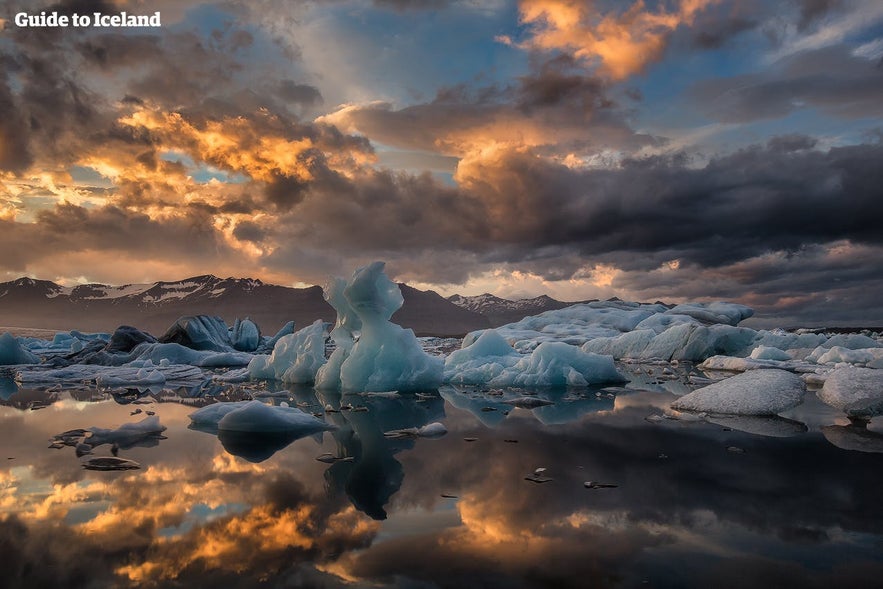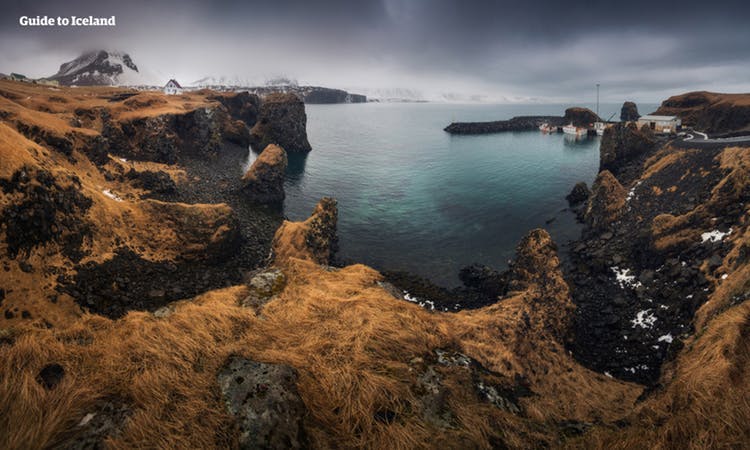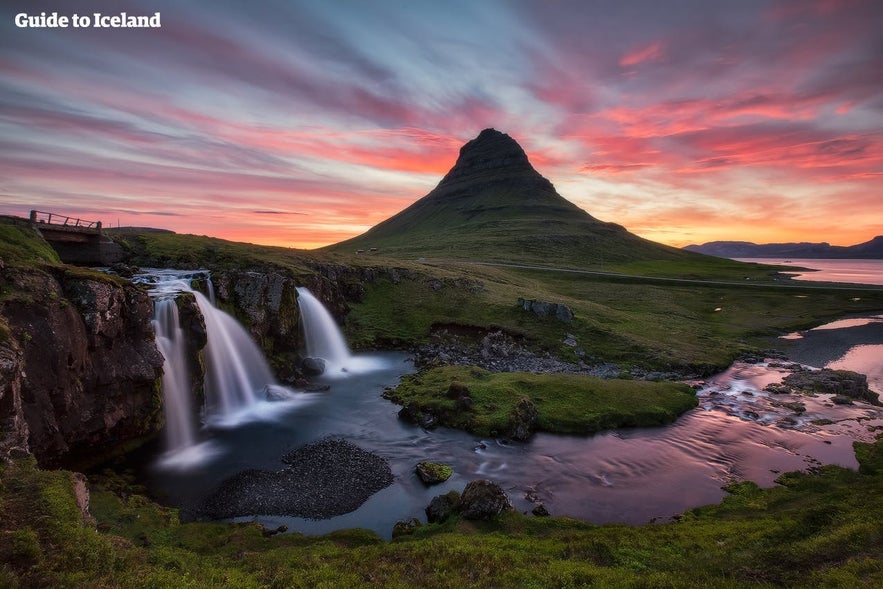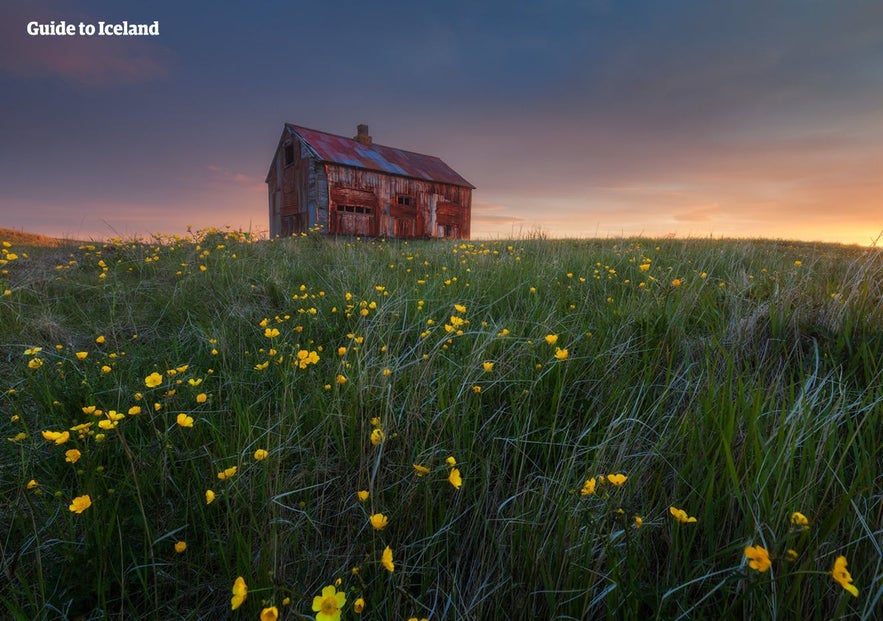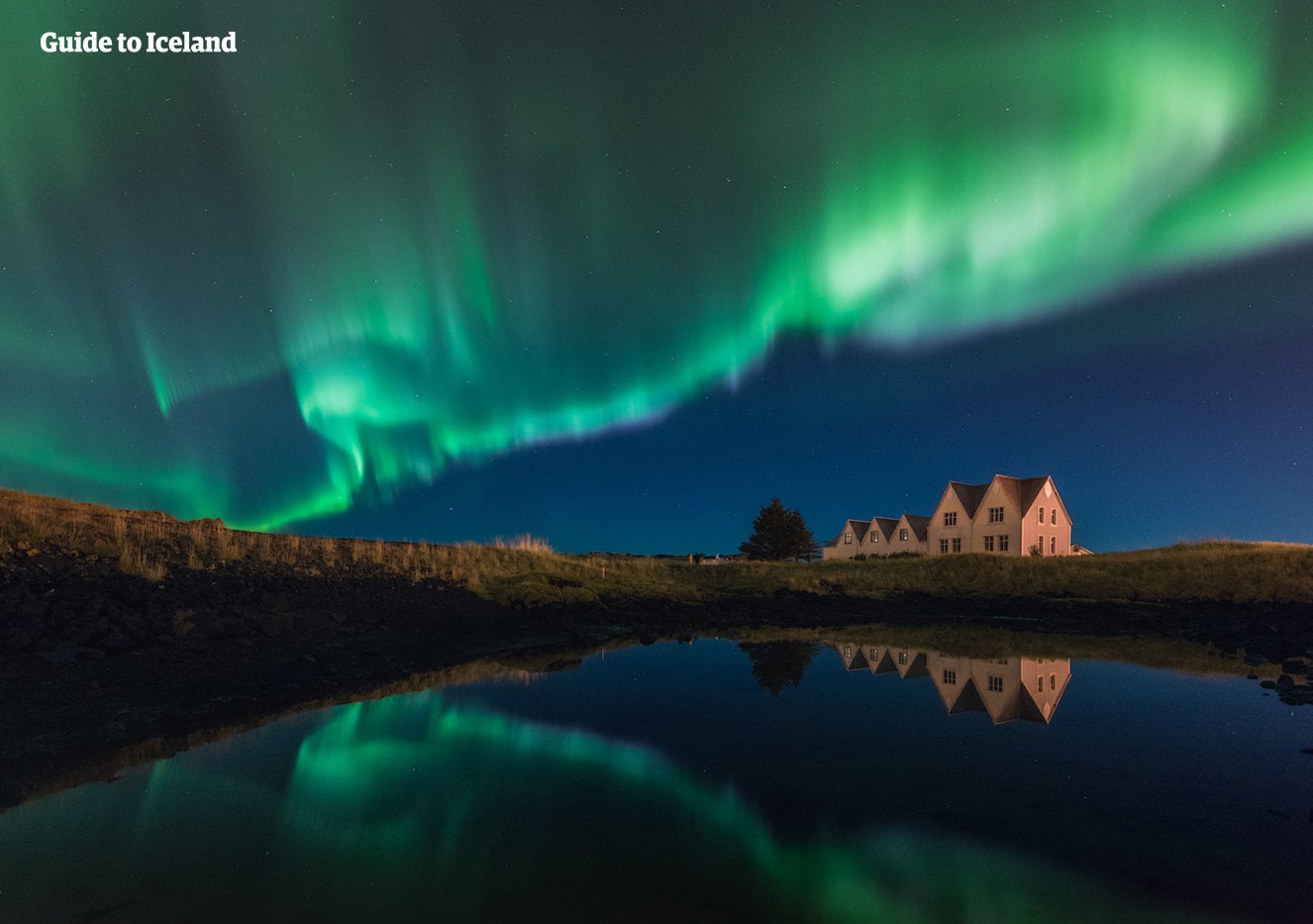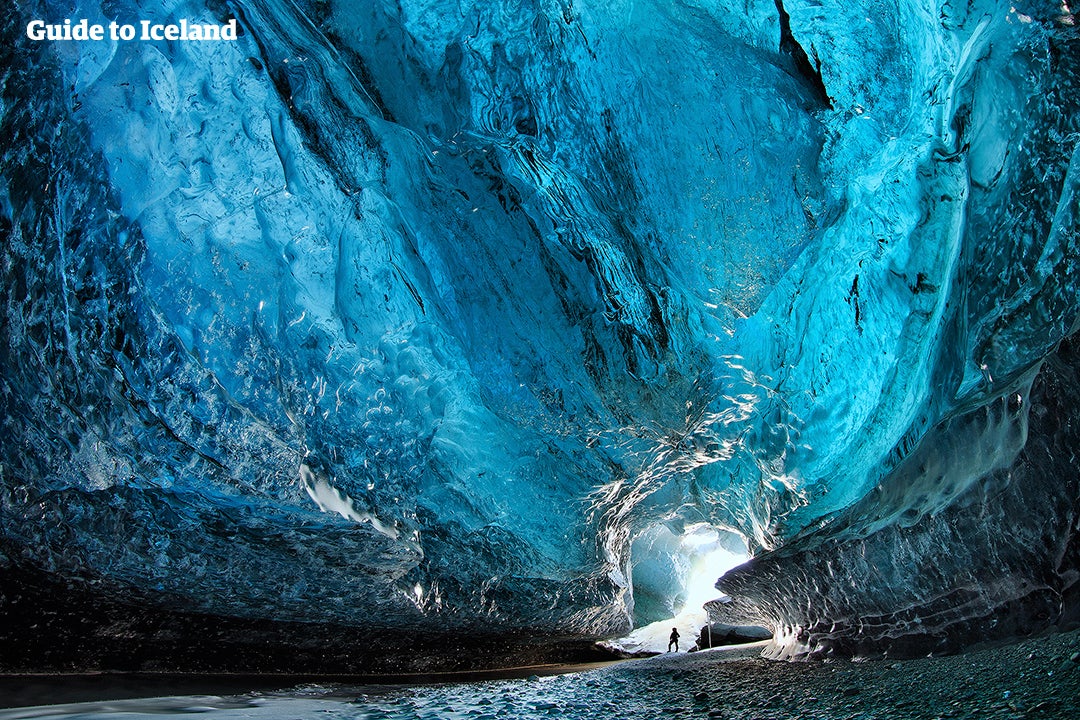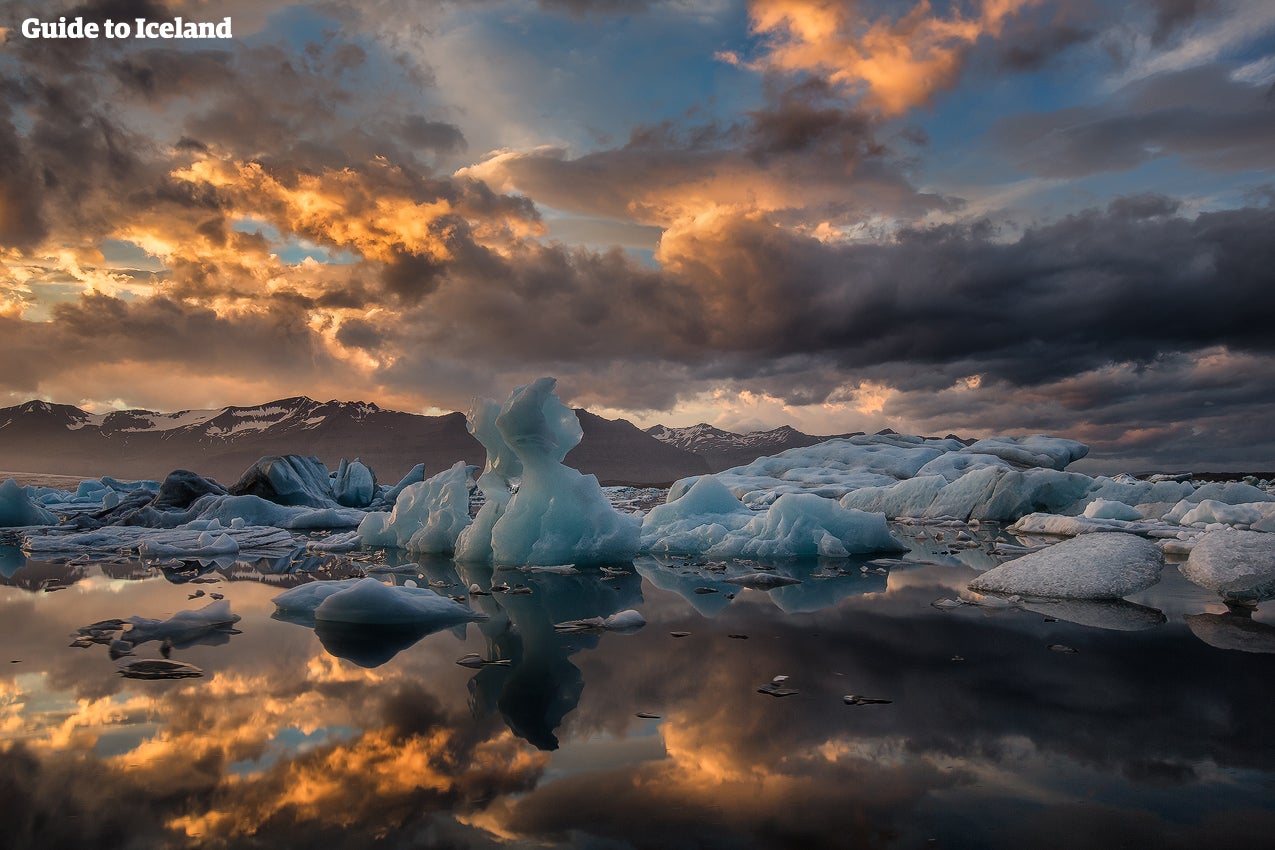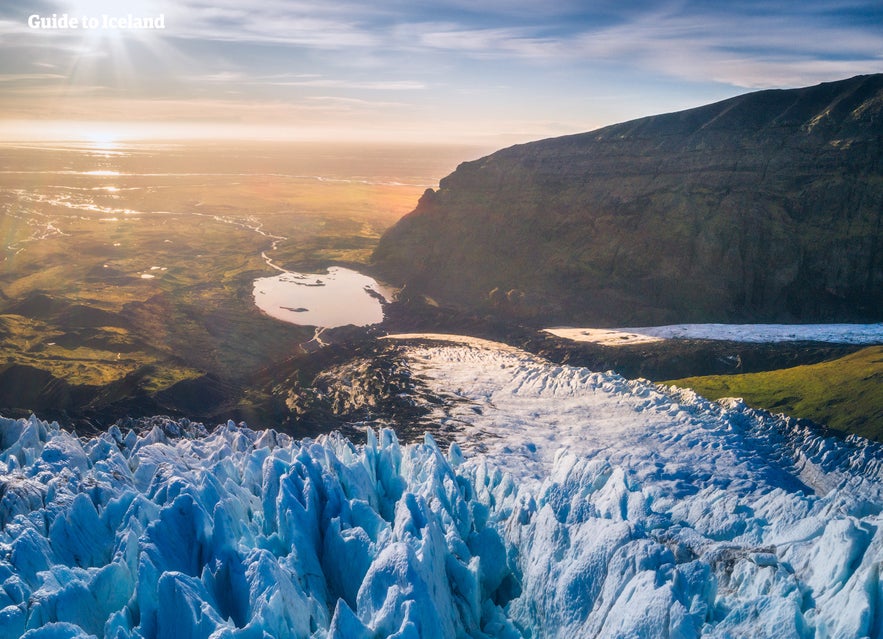
How are 9 days best spent travelling around Iceland and why do so many consider that to be the optimal length for an Iceland holiday? Read on to find out how to spend 9 fun packed days in Iceland.
- Make the most of a winter holiday with this 9 Day Winter Itinerary | The Complete Iceland Experience
- Enjoy a summer vacation in the wilderness of the highlands with a 9 Day Camping 4X4 Self Drive Tour
Why You Can Trust Our Content
Guide to Iceland is the most trusted travel platform in Iceland, helping millions of visitors each year. All our content is written and reviewed by local experts who are deeply familiar with Iceland. You can count on us for accurate, up-to-date, and trustworthy travel advice.
Day 1 | Welcome to Iceland
Arriving at Keflavík International Airport, you might already be experiencing jolts of anticipation and excitement as the full scope of your 9-day adventure finally dawns on you.
You’ve made it to Iceland, and now the real thrills begin. First, however, you will pick up your rental car from the airport booth, then depart out on the volcanic, black Reykjanes Peninsula.
A great many geological features dot Reykjanes—from intricate natural lava sculptures and steaming hot mud pools to distant mountains and black beaches.
As an introduction to the wild and untempered landscapes of Iceland, there really can be no better place to start than Reykjanes. It also just so happens to contain one of the country's biggest attractions—the Blue Lagoon.
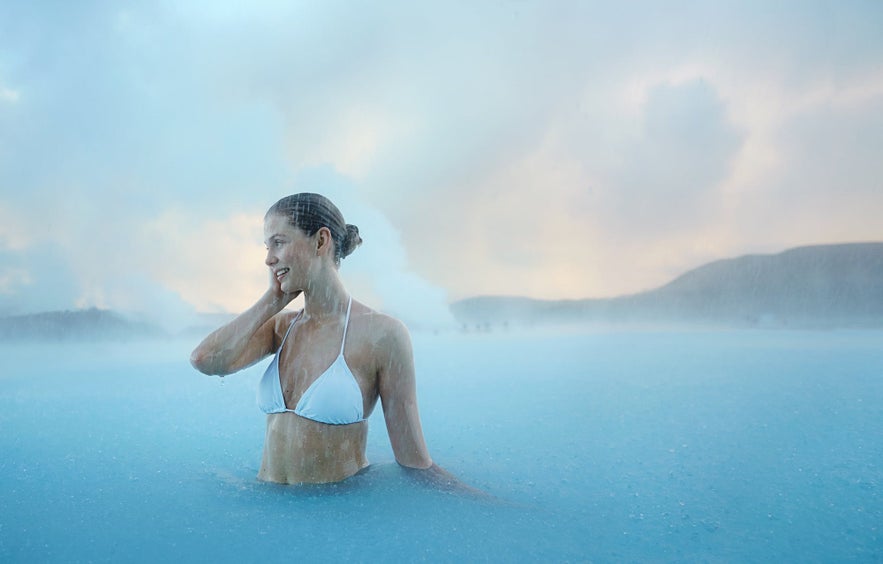
The Blue Lagoon Spa is world famous as a site for promoting relaxation, serenity and healing. It’s warm azure waters, billows of white steam, and contemporary architecture stand in stark contrast to the dark landscapes that surround it, appearing as something of an artificial oasis on a distant, uninhabited planet.
Aside from the traditional bathing, guests can enjoy face masks and massages using the lagoon's rich silica mud, known to contain countless minerals that are excellent for skin conditions such as psoriasis.
- See also: What To Do With 3 Days in Iceland
After visiting the Blue Lagoon, you will continue your journey to Iceland's quintessential capital city, Reykjavík. Once you have checked into your hotel and unpacked, the evening ends as it should, with a thorough exploration of Reykjavík’s enticing nightlife.
With a flurry of bars and restaurants, cultural exhibitions and live performances, be it music or comedy, there is always something to wet the cultural appetites of those wandering the twilight city streets.
Day 2 | The Golden Circle
Your second day in Iceland will be well spent exploring the Golden Circle, Iceland’s most popular sightseeing route. The Golden Circle is comprised of three major attractions: Þingvellir National Park, Haukadalur Geothermal Valley and Gullfoss Waterfall.
Taking unscheduled stops, and the time spent appreciating each site into consideration, traversing the Golden Circle is expected to take approximately 6 to 8 hours.
Normally, the first stop will be the UNESCO World Heritage site and national park, Þingvellir, translating roughly to “fields of the parliament”.
The name 'Þingvellir' harkens back to 930 AD, to the establishment of what is now the world's oldest active parliament, the Alþingi, which operated at the site intermittently until 1798, when the assembly moved to Reykjavík where it still holds its sessions.
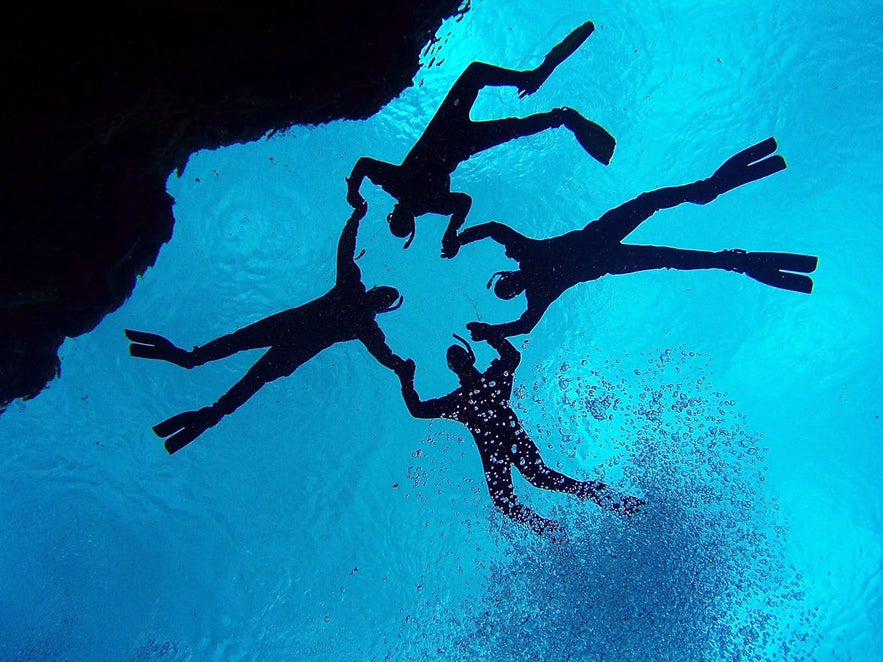 Photo from 3 in 1 Bundled Discount Activity Tours with Volcano Exploration, Snorkeling & Glacier Hiking
Photo from 3 in 1 Bundled Discount Activity Tours with Volcano Exploration, Snorkeling & Glacier Hiking
This national park can be described as a moss-blanketed no-man's land situated between the exposed North American and Eurasian tectonic plates.
Þingvellir is home to the glacial spring, Silfra Fissure, renowned as of the top ten places on the planet to undertake a snorkelling or scuba diving tour, as well as the waterfall, Öxarárfoss.
The second stop of the Golden Circle is Haukadalur Geothermal Valley, most famous for the hot springs Geysir and Strokkur. Geysir, while no longer active, is still looked fondly upon for lending its Icelandic name to geysers across the planet, whilst Strokkur is routine entertainment, firing jets of water over twenty metres (65 ft) into the air every five to ten minutes.
- See also: What To Do With 4 Days in Iceland
Gullfoss will be your final stop of the day and, arguably, the most dramatic; frothing white glacial water cascading a total of 32 metres over two jagged ledges, finally landing in a billow of mist into the basin of Hvítárgljúfur canyon below.
Gullfoss is one of the most beloved waterfalls in Iceland, and also constitutes the starting location for this country's first environmental movement.
In 1907, an English businessman named Howells intended to harness the power of Gullfoss by building a hydroelectric dam. He leased the land from the waterfall's owner, Tómas Tómasson, to the protest of his daughter Sigriður, who threatened to throw herself over the falls should the plans go ahead.
Sigriður took the case the court, taking on many long and difficult walks to Reykjavik (120 km one way) to further her cause.
This affair brought the conservation of nature into the public eye in Iceland, and cemented the importance of preservation in the psyche of its people. In 1979, Gullfoss was finally made a protected nature reserve.
Once your time on the Golden Circle is over, you will return back to the capital city where, again, you will have the opportunity to sample Iceland's fine restaurants and bars, or merely take a stroll around the twilight city streets.
Day 3 | Exploring the South Coast
One of Iceland’s most beautiful areas is the South Coast, a strip characterised by its wild, untempered shorelines, ancient sea cliffs, distant mountainscapes and glittering waterfalls.
While it is possible to discover the South Coast in a single day, it is advised to split the journey into two, allowing you far more freedom and flexibility when it comes to how much time to spend at each site.
Your first stop of the day will the waterfall, Seljalandsfoss, a truly stunning feature that sees glacial water fall over the lip of an indented sea cliff, where there is an enormous cavern that makes it is possible to walk behind and around the waterfall.
This rare perspective makes for some unique photographs, though it is not advised to trek this pathway during the winter when the footing becomes covered in slippery ice.
More than likely, your next stop will be at Seljalandsfoss's cousin, the waterfall Skógafoss. Measuring out at the same height (60 metres), Skógafoss is a much wider cascade and boasts two viewing areas; one is at the waterfall's base, right where the water hits the rocks, and the other at the waterfall's lip.
- See Also: What To Do With 6 Days in Iceland
Your final stop of the day will be at the black sand beach, Reynisfjara, known as much for the iconic rock stacks, Reynisdrangar, as it is for unpredictable tides.
Be absolutely sure not to walk too close to the shoreline for fear of being swept out to sea by a rogue wave.
In 1991, Reynisfjara was voted as one of the top 10 most beautiful non-tropical beaches in the world by National Geographic magazine.
Keeping back from the shoreline a little, it's an easy affair to stroll along these volcanic pebbles, staring in awe at the domineering mountainscapes around you. On the beach itself, your eyes will be immediately drawn to the hexagonal basalt columns that sculpt the adjacent cliffsides.
- See also: What To Do With 7 Days in Iceland
To rest, you will be spending the evening in the charming fishing village of Vík í Mýrdal. Vík í Mýrdal is often utilised as a departure location for ice caving tours on the South Coast, as a well as a rest stop for minibuses and coaches passing through the area.
Because of this, Vík í Mýrdal has become an excellent destination to grab a bite to eat or even do a spot of souvenir shopping for traditional Icelandic handicrafts. For your first night on the South Coast, one of the best bets is to stay in accommodation at Vík í Mýrdal.
Day 4 | Continuing Along the South Coast
Continuing from Vík í Mýrdal further along the South Coast, you pass through the black sand desert of Sólheimasandur on your way to the Skaftafell Nature Reserve.
During this ride, you could make a small detour to the famed US Navy DC Plane wreck, which crashed in the area in 1973 (thankfully, there were no casualties). However, the most majestic and memorable sites of the day still lay ahead.
Jökulsárlón, located in Vatnajökull National Park, is often referred to as "The Crown Jewel of Iceland" because of its astonishing beauty, a panorama characterised by enormous floating icebergs, crowning glaciers and snow-peaked mountains.
Huge chunks of ice break away from the outlet glacier Breiðamerkurjökull, dropping into the lagoon's still surface where they creak, moan and rock against one another as they move out toward the wide Atlantic Ocean. The lagoon is home to resident seals and numerous kinds of birds, which also make it a fantastic spot to experience Icelandic wildlife.
Only five minutes walk away from the glacier lagoon, guests will discover the Diamond Beach, a jet-black stretch of shoreline where the icebergs of Jökulsárlón wash up on their journey out to the Atlantic Ocean.
The contrast of colour and substance makes for fantastic photographs, with the icebergs laid out in all number of shapes and sizes. During the winter, looking out to sea will resemble the wildest of Arctic panoramas, the icebergs appearing as clouds on a still grey ocean.
All of these reasons and more fully justify taking five minutes out to see this beach yourself. Afterwards, you would do well to retire to your accommodation. Tomorrow's a big day.
Day 5 | The Mystical Eastfjords
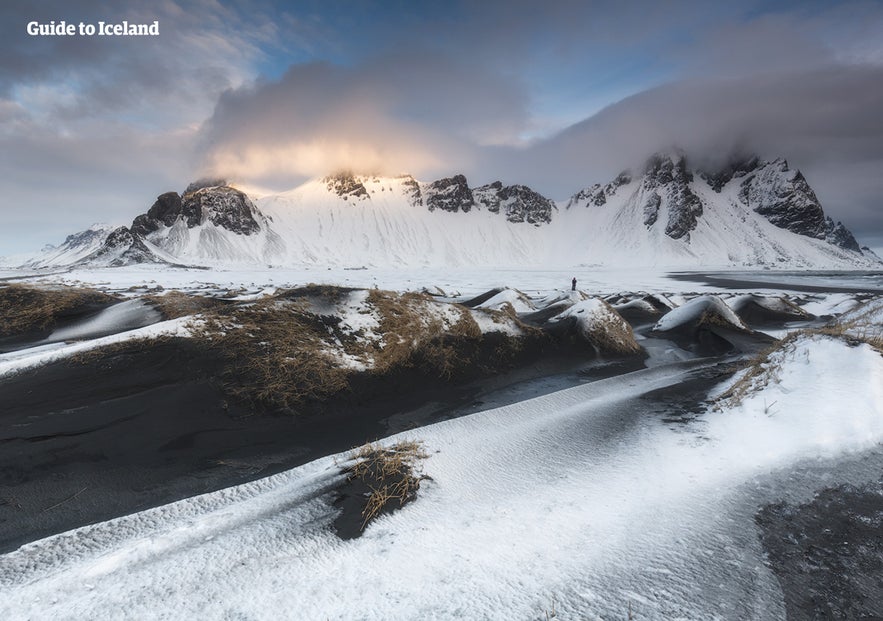
Continuing your journey along the Ring Road, you will now be heading into the mystical east of Iceland, one of the lesser visited regions of the country. The east is famed for its majestic landscapes. It is also the only part of the island where it is possible to see herds of wild reindeer in their natural habitat.
One particularly notable attraction is the mountain, Vestrahorn. Instantly recognisable for its dramatic, sharpened peaks and the adjacent shoreline, Vestrahorn has become a favourite destination for photographers and filmmakers, showcasing just how majestic Iceland's nature can be in this quiet and isolated region.
Another of the east's more uniquely attractive locations is Iceland's largest national forest, Hallormsstaðaskógur. Because Iceland is a largely treeless landscape—a result of years of deforestation on part of the island's earliest settlers—Hallormsstaðaskógur stands apart from the rest of the country's attractions, offering a breath of fresh air from the open and barren expanses that cover much of the land.
The area is particularly popular among Icelanders as a camping destination, and boasts a wide variety of hiking and cycling trails, as well as a number of picnic areas.
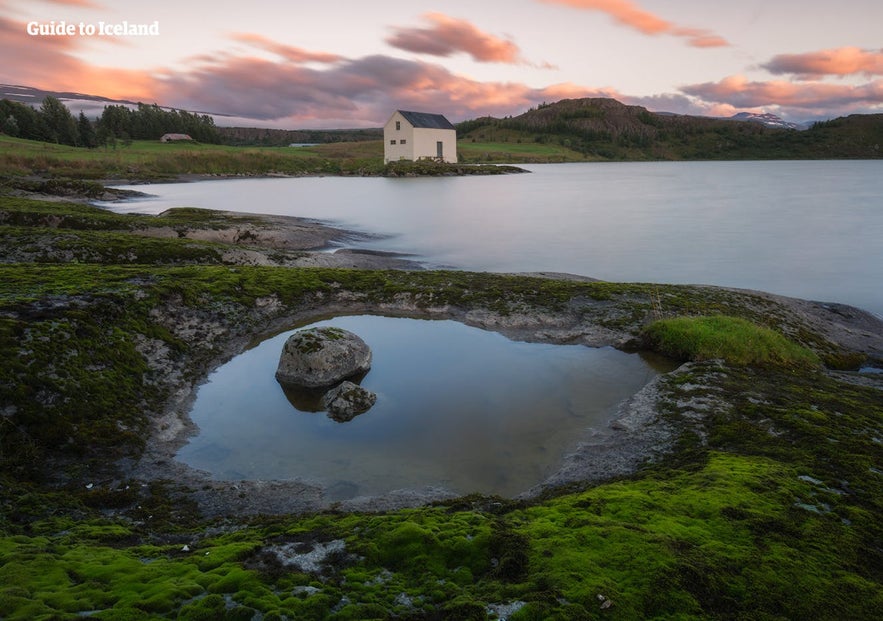
Nearby Hallormsstaðaskógur, you will have an opportunity to visit the charming lake, Lagarfljót, otherwise known as Lögurinn.
According to legend, the lake contains an enormous monster, often referred to as "The Lagarfljót Wyrm" or, in Icelandic, Lagarfljótsormurinn. As Iceland's answer to the Loch Ness monster, this strange creature has even been caught on video footage... if you believe in such things, of course.
In the evening, you would be well advised to stay in an accommodation in the town of Egilsstaðir.
Day 6 | Dettifoss and Lake Mývatn
Today, you wake up nice and early and head 200 km (125 mi) northeast to your first stop of the day: Dettifoss Waterfall. This immensely powerful force of nature sees glacial water cascade furiously into Jökulsárgljúfur Canyon, at such a rate that it is considered Europe's most powerful waterfall.
Having featured in the Ridley Scott sci-fi epic, Prometheus, it is no wonder Dettifoss is often considered somewhat otherworldly. There are a number of observation decks at the waterfall, allowing unique perspectives and photographs that are sure to stay with you for a lifetime.
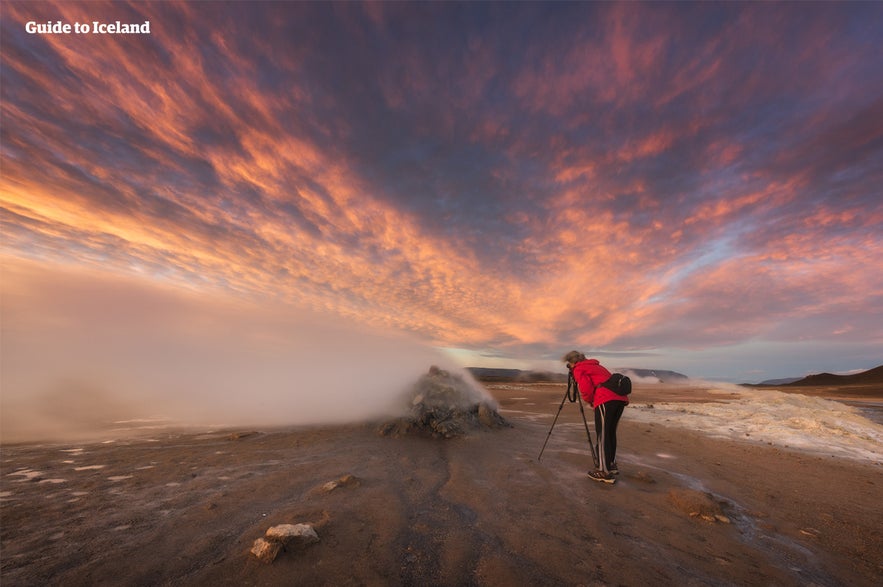
Your next stop is Lake Mývatn, an area of incredible volcanic panoramas, fascinating rock formations and, of course, the glittering body of water itself. Because of these reasons and more, the lake's surroundings have become one of the most popular regions for exploration in Iceland.
One of the most popular visitor attractions in this area is Námaskarð, a geothermal mountain pass that reflects the planet Mars with its dark red sands, steaming fumaroles and barren hillsides.
- See Also: What To Do With 8 Days in Iceland
Finally, Dimmuborgir is an expanse of dried, cragged lava sculptures that, for centuries, have been steeped in Icelandic folklore as one of the major habituations of the Huldufólk, or ‘hidden people’. It is also considered to be home to the half-troll, half-ogre called Grýla, known to gobble down naughty children during the Christmas period in Iceland.
When you have had your fill of exploring, you should visit the relaxing Mývatn Nature Baths. The silica-rich water here is sure to soothe your tired muscles, leaving you fresh and relaxed before you head for the capital of the North, Akureyri, where you will spend the night.
Day 7 | Heading West & Akureyri

Akureyri is a charmed town on Iceland’s north coast, renowned for its picturesque surroundings, vibrant local culture and the charmed forest, Kjarnaskógur. During your stay in the unofficial ‘Northern Capital’, why not take some time out to appreciate the traditional architecture of old town or, alternatively, discover the green and luscious botanical gardens which are located just five minutes walk from the town’s centre.
- See also: Summer Self Drive Tours
Another potential option for your day in Akureyri is to check out a whale watching tour. The north is known for its whale watching and for being one of the best places to see Humpback whales in Iceland.
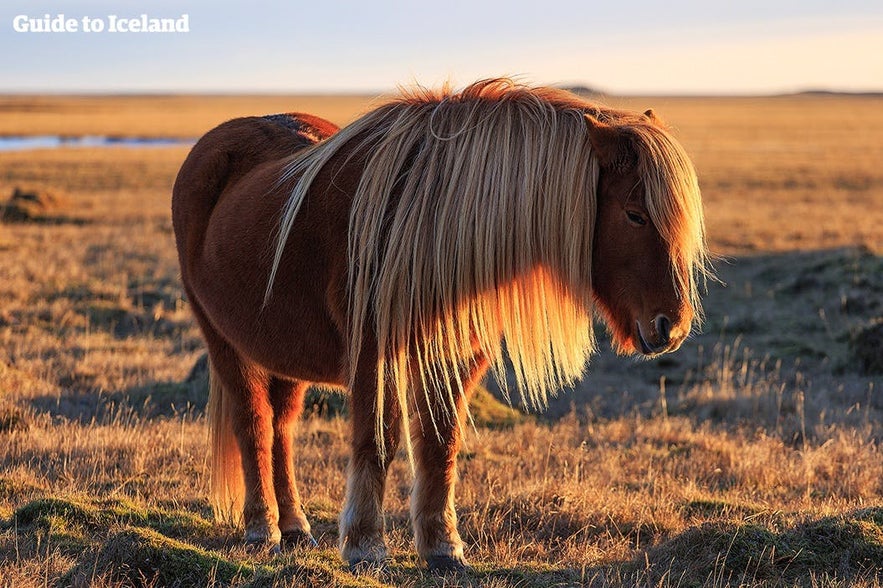
Soon, however, you will be driving to Skagafjörður, an area famous for its sheer number of Icelandic horses. This is an excellent stop to take a horse riding tour as it will allow you to ride through North Iceland's magnificent coastal landscapes of deep fjords and jagged mountaintops.
In the village of Hofsós, you will find it easy to enjoy the fantastic fjord scenery while soaking in the town’s famous geothermal 'infinity' pool which is located by the sea. Ideally, you should spend the night in or near to the village of Blönduós.
Day 8 | The Snaefellsnes Peninsula
Continuing your journey, driving south, you will make your arrival at the Snæfellsnes Peninsula, colloquially referred to as “Iceland in Miniature” due to its wide range of natural attractions.
The region is renown for its majestic coastlines, volcanic craters and expansive plateaus of dried lava, making it an excellent area to explore for a day.
Because of the peninsula's variation, there's no end to where you could choose to stop. For instance, Rauðfeldsgjá (Red-cloak rift) is a cliff-face ravine that's first mentioned in the ancient saga, Bárðar saga Snæfellsáss, and can be ventured into during your trip (Beware: the path is very slippery given a trickling stream that runs through the gorge).
Another stop could be the sandy beach, Ytri-Tunga, which during June, July and August, is a fantastic stop to spot resting seals. Yet another example of something to do is visiting the lava tube, Vatnshellir Cave, in which visitors must descend a spiral staircase to discover Iceland's dark, subterranean world.
For surface dwellers, an alternate option could be checking out the Lóndrangar basalt cliffs, two great rock pinnacles that stand on the peninsula's southern coast, attracting all manner of nesting birdlife.
- See also: What To Do With 5 Days in Iceland
The most iconic attractions, however, are the region’s namesake, Snæfellsjökull Glacier, and the “mountain like an arrowhead”, Kirkjufell, now famous for its backing role in HBO’s popular fantasy series, Game of Thrones. Kirkjufell is Iceland’s most photographed mountain, a title it holds thanks to its sloping sides, adjacent lake and the nearby waterfall, Kirkjufellsfoss.
Snæfellsnes Peninsula is also home to some quaintest towns and villages found in the country. Take, for instance, the village of Grundarfjörður—located at the base of Kirkjufell—known for its rich history of French sailors, as well as its place in Eyrbyggja saga, where it said to Berserker slaves were killed by their master after falling in love with his daughter.

Though not a large town, Grundarfjörður is incredibly picturesque, providing an insight into what daily life is like on the peninsula. The same could be said of the next town over, Stykkishólmur, with its historical wooden buildings and quaint harbour.
At the end of your day, you will retire back to your accommodation in Reykjavík. In all likelihood, you'll be tired from a day of driving, sightseeing and adventure, so will by all accounts rest up. `If, however, you still boast some energy, Reykjavík city continues to be your oyster!
Day 9 | Free Day in Reykjavik & Departure
Finally, you have yourself a free day to explore all that Iceland's capital city can offer. Thankfully, Reykjavik boasts all that's great about a modern city, from fascinating landmarks to museums, restaurants and picturesque downtown neighbourhoods.
While in the city, it would be a crime to skip over Reykjavík’s iconic cultural attractions, especially considering their general proximity to one another. Starting downtown, you will first check out the naturally-inspired architecture of Hallgrímskirkja Lutheran Church, linking its sharp stone column to the dried lava pillars often seen surrounding many of Iceland’s waterfalls.

- See also: The Ultimate Itinerary for Iceland
In the same area, one could pay a visit to The Einar Jónsson Museum, which showcases the work of Iceland’s first sculptor, or stroll five minutes towards the picturesque duck pond, Tjörnin, from where you are within easy access to the Icelandic Parliament Building, City Hall and a host of theatres, restaurants and community spaces.
Other sites worthy of a visit include the likes of Perlan Museum and Observation deck, which provides fantastic panoramic views over the city, as well as interesting displays that replicate Iceland’s unique nature. On the other end of the city sits the iconic Harpa Concert Hall and Conference Centre.
Your final day in Iceland will see you making the return journey from Reykjavík to Keflavík International Airport, travelling forty minutes back through the gorgeous Reykjanes Peninsula before returning your rental car to the depot.
Did you our find our article useful? How long did you spend in Iceland, and would you have spent more time here if you could? What activities did you get up to, and what was your favourite attraction? Make sure to leave your thoughts and queries in the Facebook comments box below.

